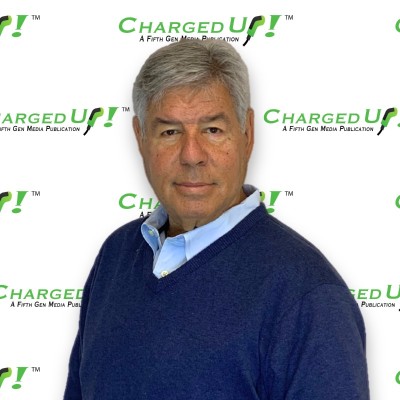Run Your Chargers Like a Business, Not a Bet: Batteries and Smarts Can Save Your Project
- Rich Berliner

- Oct 14
- 4 min read
Headlines keep telling two stories at once: the U.S. is racing to add fast chargers, and the grid is strained in the same neighborhoods where these chargers are in high demand. This situation requires pairing chargers with storage and smart energy management so you can connect sooner, control bills, and keep customers happy.
The ChargedUp! team commends the The Wall Street Journal for highlighting how storage is exploding as a grid tool, along with researchers and agencies showing how sites can use the same playbook.
What the Headlines Really Signal
Power isn’t the only constraint—timing also matters. Even when capacity exists, interconnection queues and transformer lead times can delay your go-live. Employing batteries onsite can buffer peaks (for hours, not days), letting you start with a smaller service and upgrade later.
Utilities are leaning into renewables + storage because the numbers make sense. Market operators increasingly choose renewables and storage at peak because they’re the least-cost option in many hours. Your site can borrow that logic: shift, shave, and store to hit a lower bill without slowing cars. (For further reading, check out this post from Utility Dive.)
Storage isn’t just “green”—it’s a finance tool. The National Renewable Energy Laboratory's work is blunt: demand charges and retail rates make or break fast-charging ROI. A modest on-site battery and power-sharing can flatten peaks, protect margins, and keep your posted price competitive.
The Simple Play: Co-Locate Batteries Where the Grid Is Tight
Think of a battery as a shock absorber between your cabinets and the utility meter. During a rush (say, Saturday at lunch), the battery delivers the extra kW so your meter doesn’t spike. Overnight, it recharges at lower load—or lower price—ready for the next wave. The Joint Office of Energy and Transport even publishes quick guides and checklists for set up of “battery-buffered” DCFC at grid-constrained sites.
A recent set of academic papers takes these recommendations even further with guidelines to optimize siting and operations together—deciding where to place chargers, what size battery to add, and when to charge/discharge so you minimize both grid upgrades and operating cost. In other words—right-size the service, then let software and storage do the heavy lifting.
Locations Where These Strategies Matter Most
Retail pads and small campuses with limited service: storage lets you open with 4–8 bays now instead of waiting months for a bigger transformer.
Hotels and apartments with predictable night dwell: charge the battery and vehicles off-peak, then use stored energy to cover mid-day surges.
Corridor sites facing steep demand charges: shave peaks so your effective $/kWh stays defensible versus gasoline—especially when sales incentives wobble.
(For further reading, check out this paper from The National Renewable Energy Laboratory.)
A Manager’s Checklist (No Engineering Degree Required)
1) Ask one question first: “What trips our bill?” If the answer is demand charges, you have a storage case. If it’s energy price alone, focus on time-of-use scheduling and power-sharing before you buy batteries. (Your software vendor should set both on day one.)
2) Right-size today, pre-wire tomorrow. Set trench, conduit, and switchgear for your full build; energize fewer dispensers and a modest battery now. Add cabinets as sessions grow. Joint Office playbooks and case studies show how to phase without re-digging.
3) Buy uptime you can sell. Drivers remember first-try starts and clean, well-lit bays, not your tariff wins. Specify 97–99% session success, fast MTTR, spare parts on site, and clear wayfinding. Storage doesn’t replace service; it protects it during rush hours.
4) Finance like a utility. If capex is tight, lease the battery or use a shared-savings model tied to peak reduction. The storage market is scaling quickly—OEMs are chasing grid deals because the math works. (WSJ has covered the surge in grid-battery investment.)
5) Don’t oversell “free solar.” Solar helps, but it’s the battery that makes fast charging predictable. If you add PV, think canopy for shade and branding; let the battery do the peak shaving. NREL finds PV+storage wins depend on local tariffs—run the numbers first.
What to Tell Your Board
"We can open sooner with storage." A battery-buffered site can launch on a smaller service and expand later—protecting timeline and IRR. (Joint Office case studies show the pattern.)
"Our posted price stays competitive." Peak shaving and TOU scheduling lower our effective cost, so we price the experience (speed + certainty) without losing margin. (NREL: demand charges and rates drive profitability.)
"We’re following utility logic." Markets are already picking renewables + storage at peak because it’s cheaper in those hours. We’re applying the same control at the site level.
The Bottom Line: Build Like a Utility—Store, Shift, and Scale
Look at grid constraints like a design brief, not like a stop sign. Pair your fast chargers with storage and smart controls, and you’ll connect faster, smooth your bills, and give drivers the reliable, fast experience they remember. Credit to the Wall Street Journal for surfacing the surge in storage investment, and to Utility Dive, NREL, the Joint Office, and recent research for the “how.” Build this way and your sites won’t just survive tight grids—they’ll thrive on them.




Comments